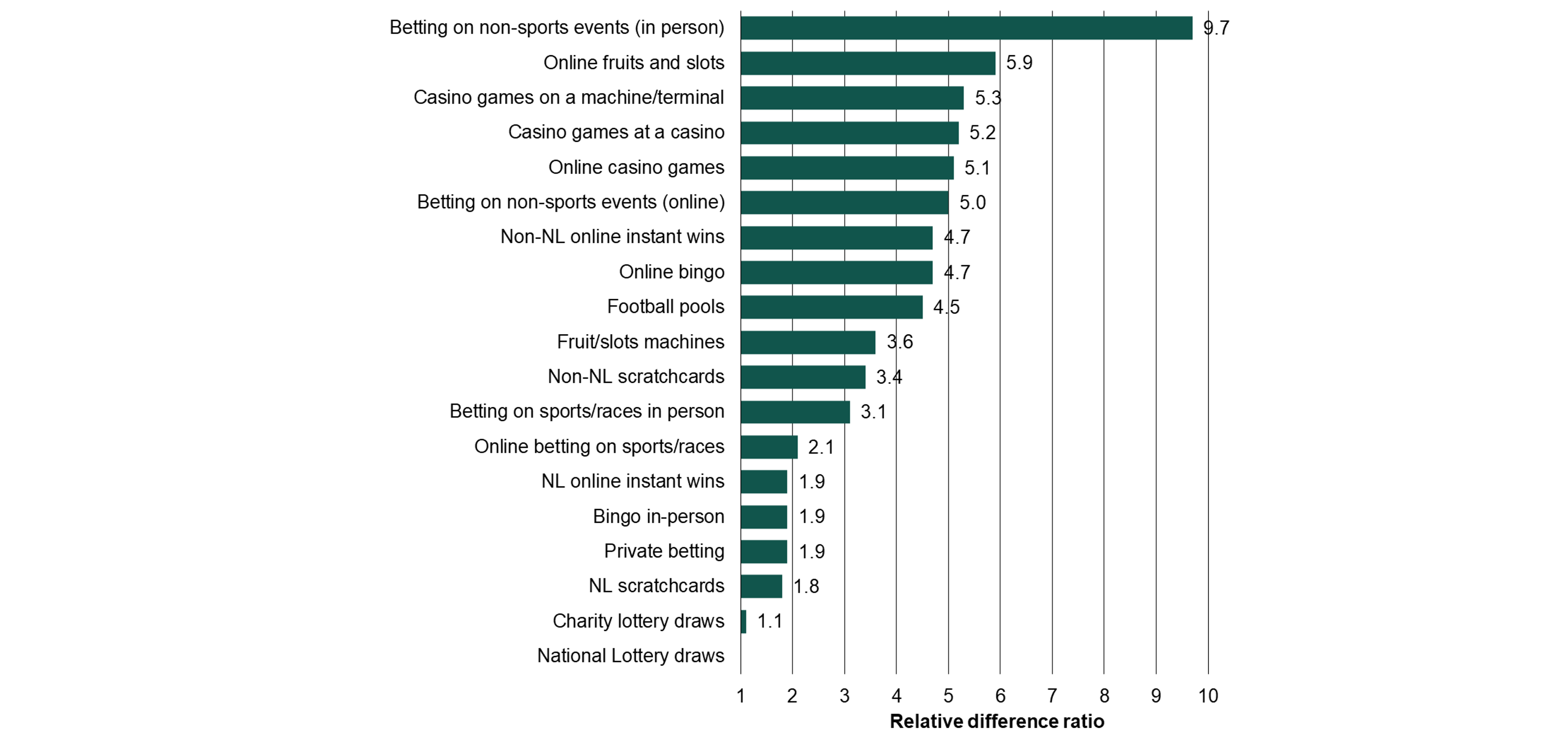Gambling
Gambling Commission 2023 survey flags in person novel betting as highest risk vertical

Players placing in person bets on novel markets are nine times more likely to be a high-risk problem gambler compared to the average percentage of overall high-risk players across all verticals, the latest UKGC data has revealed.
Players betting in person on novel markets were nine times more likely to be high-risk problem gamblers than the average player who had bet in the last 12 months, the latest UKGC data has revealed.
In person betting on “non-sports events” represented the vertical with the highest average proportion of high-risk players (PGSI score of 8+), according to the UK Gambling Commission’s (UKGC) Gambling Survey for Great Britain, released today (25 July).
Comparatively, online bettors of novel markets were 5x more likely to be a high-risk player than the average.
For online slots, rates were nearly 6 times higher than average. Online sports bettors were less likely to score a PGSI of 8 than in person bettors. However, online casino users were more likely than retail casino goers to be high-risk.
The breakdown of data by vertical included data from survey participants who had gambled in the past 12 months.
New scoring system assesses problem gambling behaviours
The UKGC’s survey used a new scoring system called the Problem Gambling Severity Index (PGSI) to score those surveyed based on their problematic gambling behaviours
On the PGSI, a score of 0 represents a gambler who did not display any problem gambling behaviours. As the scale increases, so does the rate of adverse consequences experienced by players, based on a selection of nine behaviours.
Of those behaviours, chasing losses, was the most common experience reported by participants (16%), while feeling guilty about betting and gambling more than you can afford represented 9.9% and 9.6% of the group.
Problem gambling increased in non-lottery group
Gamblers with no risk of problematic behaviours made up the majority of the surveyed group (85.6%), while 8.3% scored between 1 and 2 on the PGSI, representing low-risk gamblers. Beyond that, moderate-risk and problem gamblers accounted for 3.7% and 2.5% of the total group.
However, moderate-risk and high-risk gamblers grew to 8.3% and 5.9% in the non-lottery category, representing an uptick of almost 5% and 3% from the overall group.
Broken down by age, the 18- to 24-year-old group saw the highest amount of problem gamblers by PGSI score (9.1%). The figure dropped slightly in the next age bracket to 8.4%, with the 55- to 64-year-old bracket having the lowest percentage of high-risk players (0.7%)
Overall participation in gambling higher among males
For overall gambling activities, 63% of males surveyed had gambled in the past 12 months, compared to 58% of females. Outside of lottery betting, 42% of males and 39% of females had gambled during the period.
By age, 25- to 34-year-olds had the highest participation of non-lottery gambling with 52% having gambled in the last 12 months. Of those aged 35 – 44, 50% had bet outside of the lottery. Participation then decreased with age, to 19% of those aged 75 years and above.
When looking at online gambling activities in the last month, the 18- to 44-year-old age bracket had the highest participation (20-21%) when excluding the lottery. When taking the lottery into account, the 45- to 54-year-old bracket gambled the most online in the last four weeks (43%).
UKGC unveils new methodology
Overall, the survey was carried out by 9787 participants, 64% (6,303) completed the survey online and 36% (3,484) by post.
The Commission had previously warned that the new “push-to-web” methodology meant results could not be directly comparable to prior gambling or health surveys.
It said in a guidance released last week that the survey should not be used to calculate an overall rate of gambling-related harm in Great Britain, or as a measure of addiction to gambling in the country.
As a result, the survey faced criticism even before it was published, with some stakeholders suggesting the methodology could overstate the level of risk within the gambling industry.










